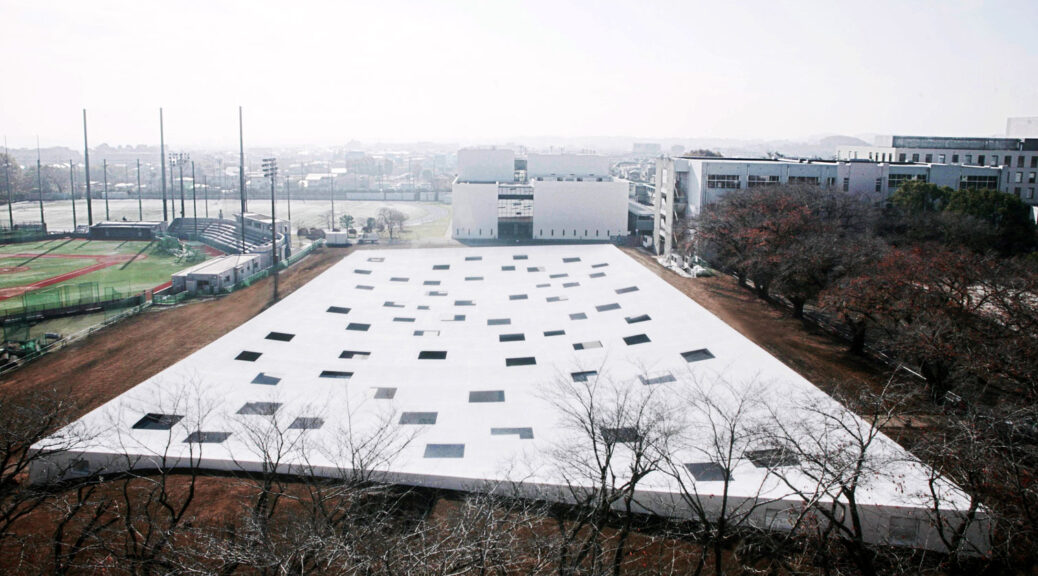#146: THE MOST STRIKING BUILDINGS OF 2021
(photo by Junya Ishigami + Associates)
Once again, I look back at the past year in search of stand out projects. Instead of “the best”—which I dare anyone to define—I listed the most intriguing for 2020 and the most seductive for 2019. For closing out 2021, the operative adjective is striking. Common synonyms for ‘striking’ include: stunning, dramatic, prominent, remarkable, unusual, and beautiful.
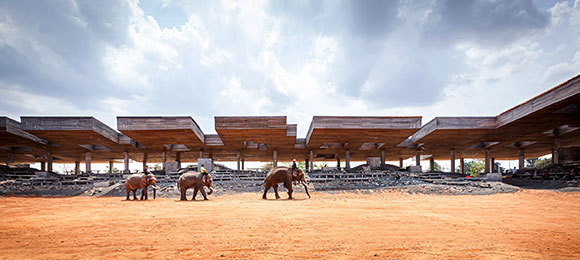
1: In Thailand, elephants are seen not as random animals or pets, but as family members. For this project, elephants are the clients. Bangkok Project Studio created Elephant Museum Elephant World, housing 200 elephants in accommodations of grandeur and beauty, honoring their place in the country’s ancient history and royal ceremonies. With a nod to heritage and community, half a million bricks were proudly handmade from regional soil using a traditional local method.
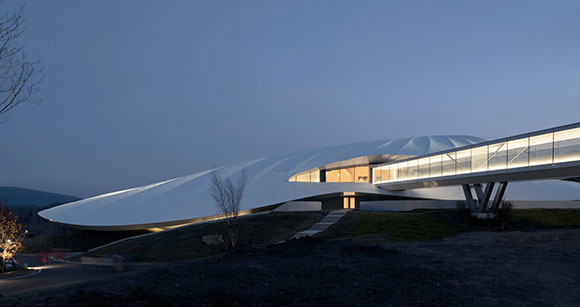
2: Whether a metaphor of a potato chip or a clamshell, the Yabuli Entrepreneurs’ Congress Center sits gracefully in the dramatic topography and freezing climate of Shangzhi, Harbin, China. Capturing an agenda of critical thinking and ambitious vision, MAD Architects has designed the headquarters for the international economic platform known as the China Entrepreneur Forum.
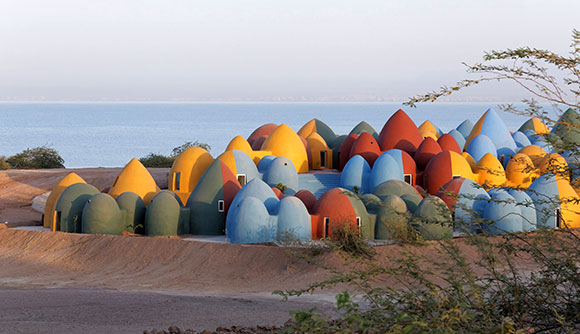
3: Housing for this historic port at the strait of Hormuz in the Persian Gulf explores colors, shape, scale, and playfulness. A project of both childlike simplicity and heroic vision, ZAV Architects has offered numerous domes using an adobe technique of rammed earth and sand, pioneered by the famed Iranian-American architect, Nader Khalili.
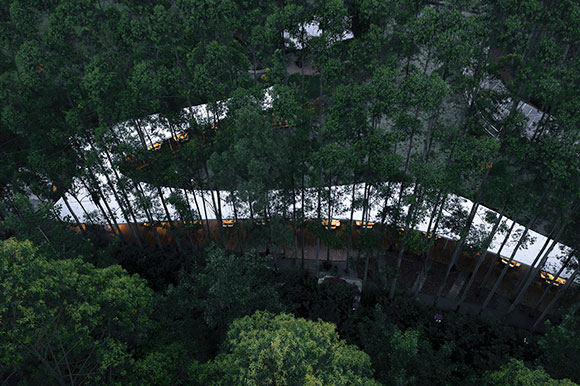
4: MUDA-Architects delicately weaves architecture into nature for the Garden Hotpot Restaurant. Located in Chengdu, China, the design reduces the building to almost nothing, as it plays hide-n-seek with its amoeboid-like forms twisting through trees. The structure’s circumference measures 1,000 feet with a mere height of 10 feet, and white fluorocarbon paint finishes the galvanized steel roof which is held up by pencil-thin columns only 3 ½” in diameter.
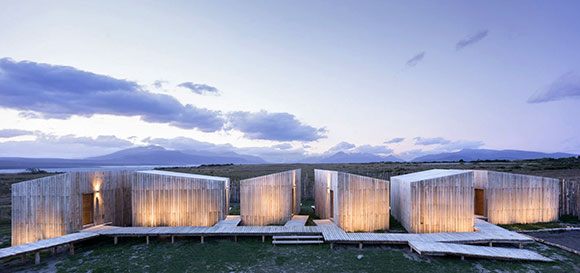
5: As if Donald Judd installed land art in Puerto Natales, Chili, the abstract beauty of reduction is captured at the Aka Patagonia Hotel. By designer Larrou, an elevated walkway links the prefabricated wood cabins to each other. Together, the elemental box-like quarters—mute on one side but open on the other—embrace views to Chile’s Golfo Almirante Montt canal.
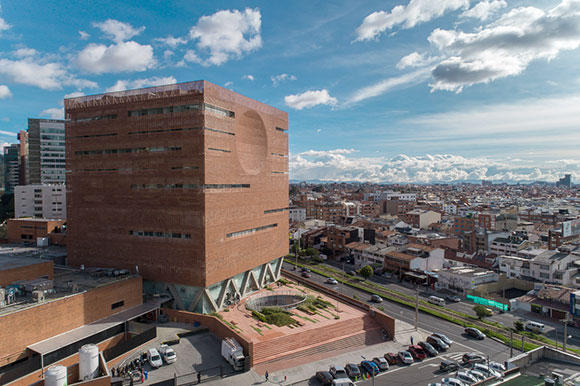
6: Known as the Santa Fe de Bogotá Foundation, this 12-floor hospital expansion uses brick in innovative and non-intuitive methods. Rather than the typical gravity-driven compressive state of masonry, architect El Eqiupo de Mazzanti explores brick in an extensive state like a woven fabric. Located in Bogota, Colombia, the massive iconic cube of a building with its signature dent on the surface is both massive and light, both solid and translucent.
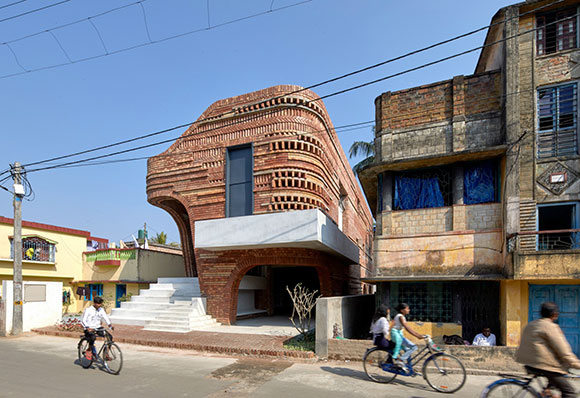
7: A community building and a work of street sculpture, the Gallery House by Abin Design Studio serves the neighborhood with multipurpose spaces, gathering hall, dormitory, and garage. In Bansberia, West Bengal, India, the architect teamed with a local ceramic artist to select masonry blocks that were discarded for industrial use, a kind of reincarnation of rejected materials.
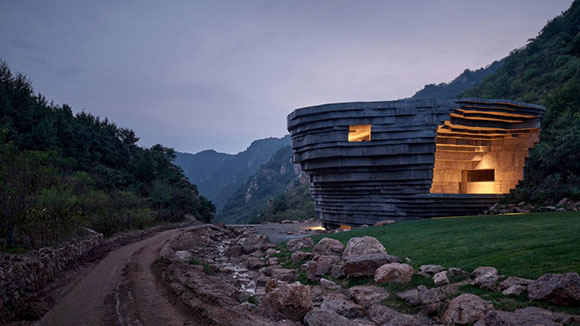
8. The Chapel of Sound, an 8,500-square-foot open-air concert hall, is a music venue never before seen. Located in Hebei Province, 200 yard from the Great Wall of China, the structure looks like an outgrowth of the hillside terrain , or perhaps an alien rock formation. By Open Architecture, this concert hall of cantilevered, stacked layers of concrete sits near a mountain resort, and includes a dressing room, green room, and restrooms.
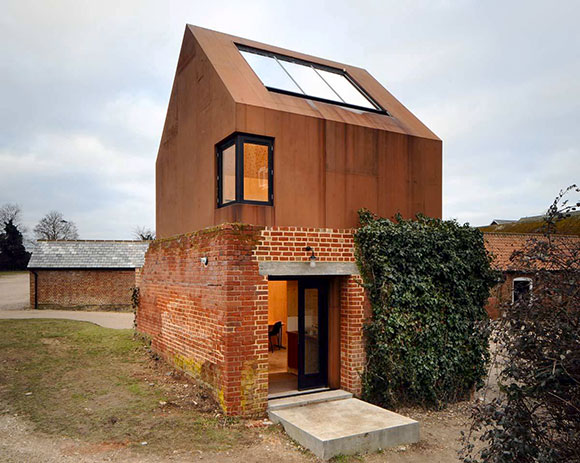
9: Old meets new in Edinburgh, Scotland, for the music campus at Snape Maltings. Architect Haworth Tompkins has conceived of an artist studio where a weathering Corten steel box is inserted into a Victorian ruin of brick and decay. Within the plywood interior sits a flexible art space or performance/rehearsal room, which includes a mezzanine and kitchenette. With no intention of blending the new addition with the existing conditions, the result is less about cohesion and more about a curious parasitic relationship.
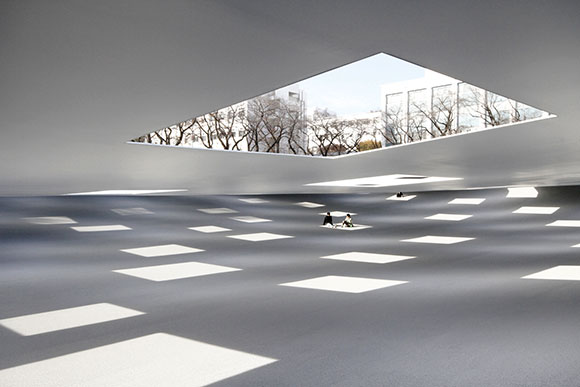
10: (See first image and above.) Striking due to its ambiguity, this plaza at Kanagawa Institute of Technology, Tokyo, is a versatile semi-outdoor gathering space, a massive urban sculpture of 59 ceiling cutouts, and an amazing feat of engineering akin to a suspension bridge. Architect Junya Ishigami states, “The process of passing time becomes the subject”.
(For the 2017 list of my all-time 15 favorite buildings, visit here.)

